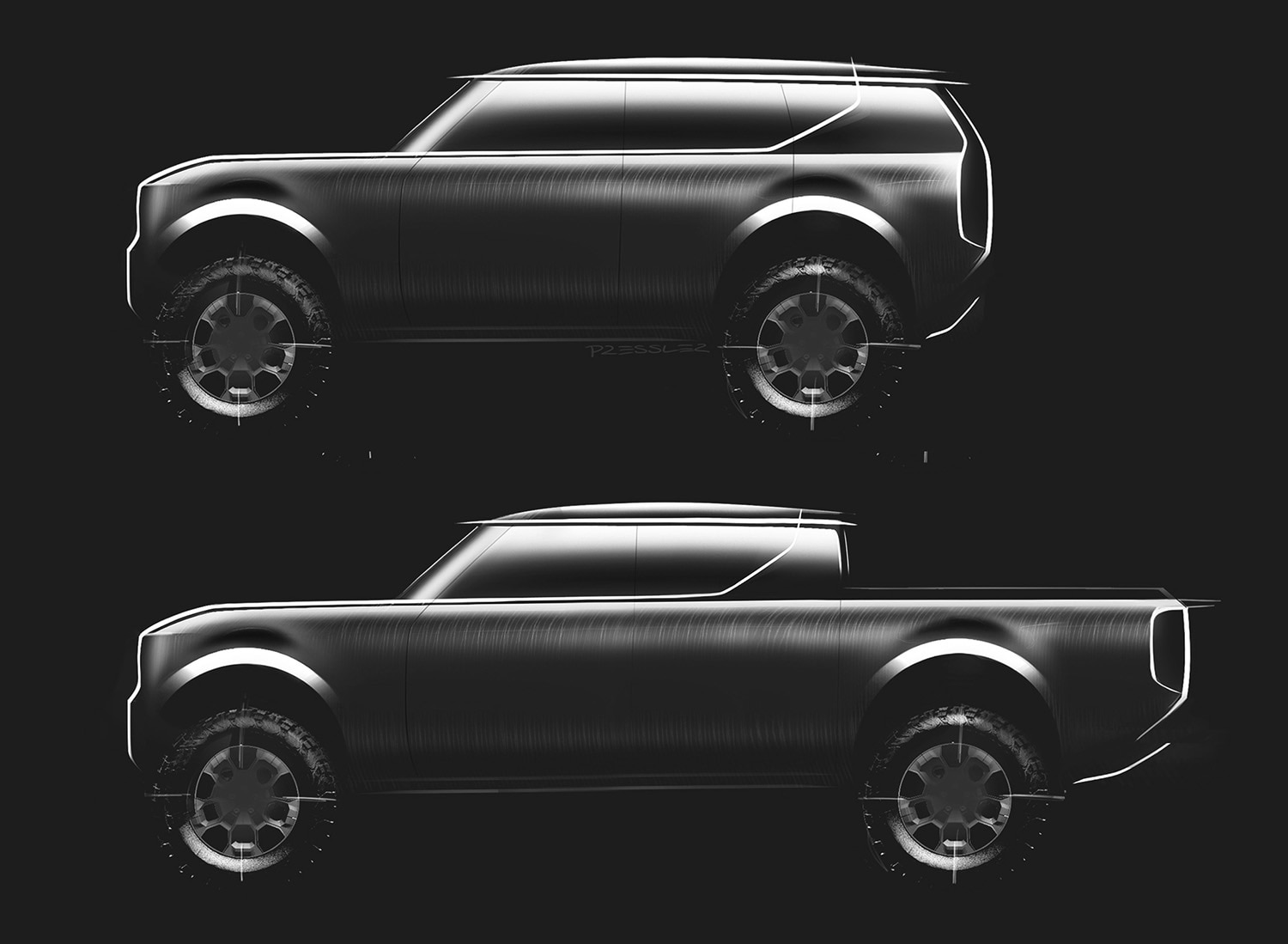The History and Future of Scout, Volkswagen's Brand for Electric Off-Roaders
This retired nameplate will soon grace the sheetmetal of new, trail-ready EVs.
 Volkswagen Group
Volkswagen Group
Article QuickTakes:
Within the past year or so, we’ve seen two auto industry trends—electric powertrains and terrain-tackling prowess—converge in the Rivian R1T, Ford F-150 Lightning, and GMC Hummer EV. Now the Volkswagen Group is jumping into the game and onto the trail with its own battery-powered off-roaders. In May, the world’s second-largest automaker released renderings of two EVs: a rugged SUV and a pickup truck, both set for production in 2026. But these vehicles won’t wear VW badges. They will be designed, engineered, and built in the U.S. by a new Volkswagen Group subsidiary with an old name: Scout.
Scout’s Rise and Fall
The Scout name was first used in the early 1960s, when International Harvester—a now-defunct automaker that built passenger pickups along with farm tractors, commercial trucks, and construction equipment—sought to make a compact, bare-bones SUV that could compete with Jeep. The Scout ended up challenging not only the CJ, but also the Land Rover Series IIA, the Toyota FJ40 Land Cruiser, and the Ford Bronco. Soon after introducing the improved Scout II in 1971, International bolstered the ute’s reputation and sales by fielding a factory off-road racing effort for several years.
In 1980, the company—facing numerous operational difficulties including a labor strike—shut down its passenger-vehicle arm, concluding the Scout’s 20-year production run. IH built just under 533,000 Scouts during that time, and today, the model has a decent following among enthusiasts and collectors, with some paying high prices for restored versions.

Volkswagen Group
Scout’s Revival
International Harvester sold off its agricultural unit and company name in 1986, reorganizing as Navistar to focus on commercial trucks. Last year, one of VW Group’s subsidiaries bought Navistar and, with it, the Scout trademark.
The automaker now hopes to capitalize on consumer nostalgia by bringing Scout back as a brand. We’ll need to wait until next year for the prototype unveilings to see which, if any, details carry over from the original models, but the sparse renderings of the new EVs show some design similarity to the Scout II in the shape of the rear end and windows.
Electrifying Competition
Volkswagen is banking on brand familiarity and the overlanding trend to drive Scout demand, and it’s a fair bet. After all, the original Scout’s contemporaries survive in modern, more civilized forms, and they’re popular. In 2021, Jeep sold some 205,000 Wranglers along with 90,000 Wrangler-based Gladiator pickups. Meanwhile, customers face long waits for Ford’s resurrected Bronco, and Land Rover’s reborn Defender is the automaker’s second-best seller.
Volkswagen Group currently offers nothing in this category; the SUVs from its affiliate brands (i.e., Audi, Bentley, Lamborghini, and Porsche) are not usually seen barreling down muddy trails. The electric Scouts will presumably fill this gap in the company’s portfolio, but they will also have company when they arrive. Rivian is taking reservations for its R1S SUV, expected in 2023, and has already started deliveries of its R1T pickup. In March, Jeep released a photo of its



